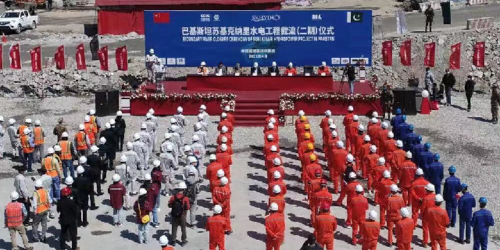Suki Kinari (SK) Hydropower Project in Khyber-Pakhtunkhwa (K-P) achieved the second-stage river closure on Friday, entering a new phase of its dam construction.
The successful cut of the Kunhar River’s main riverbed with the river being diverted to spillway is to create free-from-water working areas for construction of concrete dam of the power station under the China-Pakistan Economic Corridor (CPEC), located in the Mansehra district of K-P.
In a tweet, CPEC Authority Chairman Lt Gen (retd) Asim Saleem Bajwa has said that 60 per cent work of the Suki Kinari Hydro Power Project had been completed and it is expected to become operational by December 2022.
After attending the Secondary River Closure ceremony of the 884MW hydropower project, the CPEC Authority chairman said the total cost of the project located at River Kunhar, Kaghan is $2 billion.
Calling the closure a key milestone of the 884-megawatt hydropower project, Jia Ancheng, general manager of China Gezhouba Group Overseas Investment Co, Ltd., a subsidiary of the China Gezhouba Group Corporation which invests in and implements the project, attributed the achievement to the joint and hard efforts made by the Chinese and Pakistani constructors despite Covid-19.
Jia said that his company will continue to enlarge investment in Pakistan, deepen cooperation with the local governments in the sectors of power, transportation and environmental protection, thus facilitating the common development of the two countries.
On the occasion, Muhammad Hamid, assistant commissioner of Balakot, a town in Mansehra district, said that the SK power project has provided some 5,000 local jobs. “It will beautify the landscape, thus attracting more tourists to come and generate greater revenue.”
With a total investment of about $1.96 billion, the project started construction in January of 2017, and is expected to be completed in December, 2022.
Once getting functional, the CPEC project will annually generate some 3.21 billion kilowatt-hours of clean electricity, replacing 1.28 million tonnes of coal and reducing 2.52 million tonnes of carbon dioxide emissions per year, according to Huang Senlin, Quality, Health, Safety and Environment Management (QHSE) director of the project.







